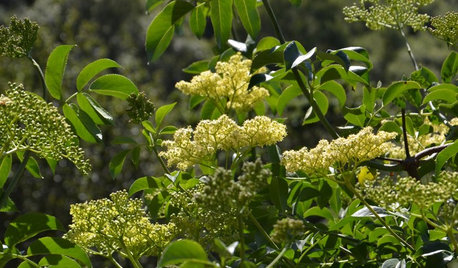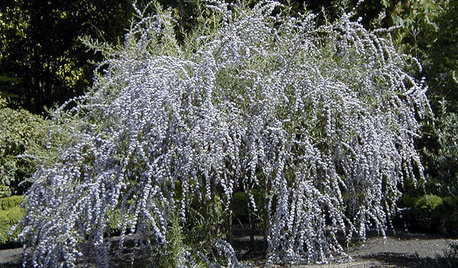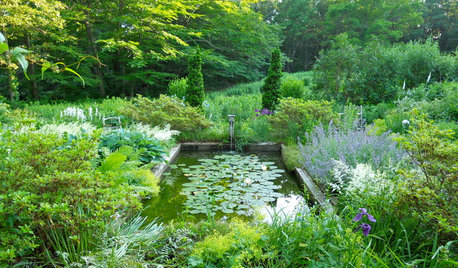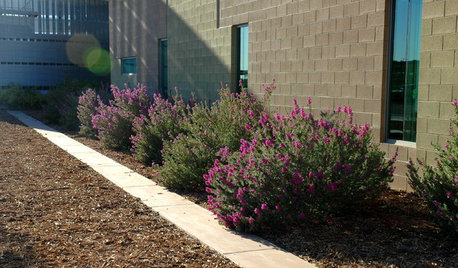Sambucus shrub...questions
AdamM321
19 years ago
Related Stories

GARDENING GUIDESGreat Design Plant: Sambucus Nigra
Common elderberry is a highly adaptable shrub from the eastern U.S., with berries galore for wildlife and humans alike
Full Story
GARDENING GUIDESGreat Design Plant: Sambucus Nigra Caerulea for the Birds
Blue elderberry is a favorite of birds and other wildlife in its native California
Full Story
GARDENING GUIDESHow to Prune Your Flowering Shrubs for the Best Blooms
Less is often more when it comes to properly pruning flowering shrubs. Here’s what to do and why
Full Story
GARDENING GUIDESNo-Regret Plants: 5 Questions Smart Shoppers Ask
Quit wasting money and time at the garden center. This checklist will ensure that the plants you're eyeing will stick around in your yard
Full Story
GARDENING AND LANDSCAPINGVase Shapes Set Shrubs Apart
Billowing on top and slender on the bottom, shrubs in a vase shape showcase blooms and foliage to perfection in the landscape
Full Story
GARDENING GUIDES8 Native Shrubs for Year-Round Bird Feeding
It’s not just about berries. These plants provide insects for birds and seasonal interest for gardeners
Full Story
PLANTING IDEAS5 Reasons to Bring Shrubs Into the Flower Garden
Mix up the garden experience and let the flowers and shrubs play together
Full Story
GARDENING GUIDESHow to Avoid Overcrowded, Overpruned Shrubs
Go for a more natural look that’s easier and less expensive to maintain by giving your plants the right amount of growing room
Full Story
TREESHow to Buy Healthy Trees and Shrubs
A healthy young plant with a strong form is more likely to do well in your yard. Here’s what to look for at the nursery
Full Story
Design Dilemmas: 5 Questions for Design Stars
Share Your Design Know-How on the Houzz Questions Board
Full StoryMore Discussions






chrsvic
Iris GW
Related Professionals
Windham Landscape Architects & Landscape Designers · Zion Landscape Architects & Landscape Designers · Anderson Landscape Contractors · Alpharetta Landscape Contractors · Beachwood Landscape Contractors · Dickinson Landscape Contractors · Doctor Phillips Landscape Contractors · Dudley Landscape Contractors · Goodlettsville Landscape Contractors · Newberg Landscape Contractors · Chicago Ridge Landscape Contractors · Selma Landscape Contractors · Pawtucket Driveway Installation & Maintenance · North Hollywood Swimming Pool Builders · Santa Paula Swimming Pool BuildersAdamM321Original Author
jillmcm
Iris GW
sarahbn
Elaine_NJ6
sarahbn
roseunhip
sarahbn